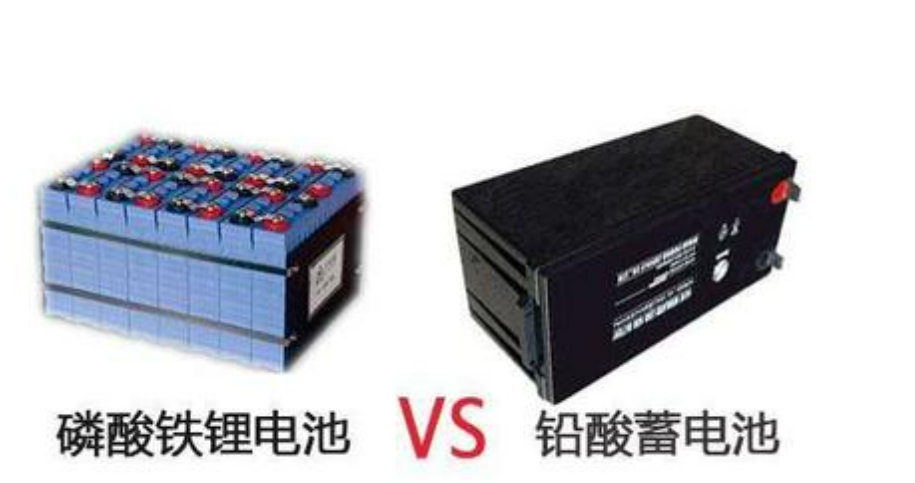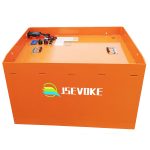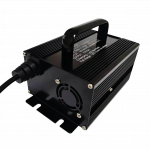
Today let’s compare the battery differences between lithium battery forklifts and lead-acid battery forklifts.
The two batteries can be compared in seven aspects. (Lithium battery here refers to lithium iron phosphate lithium battery)
First, the comparison of charge and discharge. Lithium batteries rely on their own chemical characteristics to charge and discharge with high current, and they can be used as they are charged. Under the same conditions, the charging rate is 4 to 5 times that of lead-acid batteries. We know that under the premise of the same tonnage, the same battery capacity and the same short use time, the annual electricity cost of a lead-acid battery forklift is nearly twice that of a lithium battery forklift.
Second, the memory effect of the charger: lithium battery forklift rechargeable batteries have no memory effect, and can be charged intermittently at random without affecting the service life of the battery. Lithium battery forklifts can efficiently use work breaks and rest time to replenish power. And it is convenient for us to coordinate our work. During the charging and discharging process, the lithium battery not only loses less energy, but also maintains the rated output power no matter how much remaining power is left. Lead-acid battery forklifts have a memory effect. Random or intermittent charging will seriously affect the battery and shorten battery life. The requirement for regular and balanced charging of lead-acid lithium battery forklifts is not conducive to our overall work planning.
Third, the service life of the vehicle battery. The battery cycle charge and discharge times of lithium battery forklifts can reach more than 3,000 times, and the battery cycle charge and discharge times of lead-acid battery forklifts are 500 to 1,500 times.
Fourth, the operating temperature environment: Lithium battery forklifts have good charging performance in low or high temperature environments between -25 degrees and 65 degrees. The service life of the lithium battery, the number of charge and discharge cycles, the value, and the specific value of the discharge efficiency in low temperature and high temperature environments are all determined by the quality. Of course, the better the quality of the battery, the better the attribute data.
Fifth, operating efficiency: lead-acid battery forklifts require a lot of maintenance, and electrical appliances need to add distilled water to the battery and replenish electrolyte. This leads to the need for manual labor and time to maintain when changing shifts. This increases the production cost in a disguised form, and the lithium battery is not only maintenance-free, but also charges and discharges itself quickly, suitable for multi-shift operations, charging and using at any time, eliminating the time and safety risks of battery replacement. Forklifts operate flexibly, which can save production costs and improve production efficiency.
Sixth, input cost: the one-time cost investment of lithium batteries is higher than that of the first three batteries, but from the perspective of long-term use in many aspects, the cost savings and value created by lithium battery forklifts are much higher than that of lead-acid battery forklifts.
Seventh, in terms of environmental protection, lead-acid battery forklifts will emit hydrogen and sulfur dioxide during use. Harmful substances such as mercury and cadmium are not only harmful to the environment, but also harmful to the health of users. Lithium battery is a product of new energy, does not contain harmful substances, and is environmentally friendly. With the rapid development of society, the emergence of lithium battery forklifts is the general trend. Lithium-ion forklifts have short charging time, long use time, stable performance, can withstand high-intensity operations, have a high degree of automation, and are energy-saving and environmentally friendly, adding a beautiful landscape to the forklift industry.



